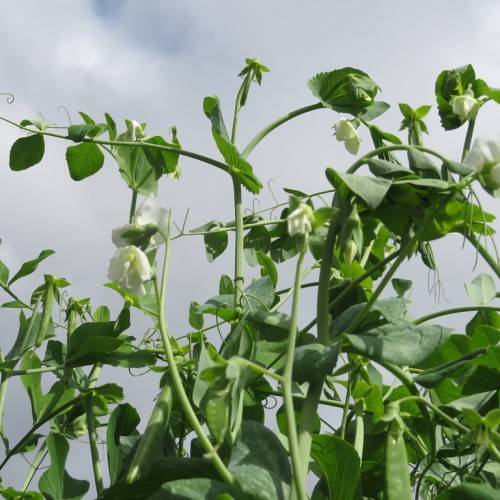
garden pea
Pisum sativum
Cycle:
Annual
Watering:
Average
Hardiness Zone:
2 - 11
Flowers:
Flowers
Sun:
Full sun
Fruits:
Fruits In Summer Ready In Summer
Edible:
Yes
Leaf:
Yes
Growth Rate:
High
Maintenance:
Moderate
Care Level:
Medium
watering
Garden peas (Pisum sativum) typically require 3 to 4 inches of water per week, depending on the weather and soil type. Garden peas prefer well-drained soil that does not become waterlogged. If rainfall is limited, water garden peas slowly and deeply at least once a week. If the weather is hot (over 85° F) or very dry, garden peas may require additional irrigation to keep them supplied with water and produce a healthy crop.
sunlight
Garden pea plants (Pisum sativum) prefer full sunlight, receiving at least 6 hours of direct sunlight each day to grow and produce abundantly. If they are receiving less than that, they may develop nutrient deficiencies that limit fruit production. In fact, some gardeners grow these peas as a companion plant to other tall-growing plants or vines to give them a bit more shade during the hottest parts of the day. One way to ensure that your garden peas get the optimal amount of light is to plant them in an area that receives full sun for at least 6 hours each day, ideally in the early morning or late afternoon. This will also help prevent heat stress, as it is important for garden peas not to be exposed to temperatures that exceed 90° F (32° C) for more than a few hours.
pruning
Garden peas (Pisum sativum) should be pruned every 2-3 weeks during the growing season, starting when the plants are about 15 cm (6 inches) high. Pruning will help to promote healthy growth and maintain an attractive shape. Start by cutting off stems that are growing too long or leaning too far from the main stem. Cut just above a pair of leaves or buds, as this will encourage the plant to produce new growth. You can also remove any dead or dying stems and branches, as well as any weak or spindly growth. When the plants begin to flower, the spent flowers should be regularly removed. This will help to keep the plant flowering for longer and improve yields. Be sure to prune lightly and always use sterilized pruning shears.
